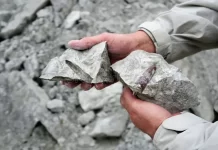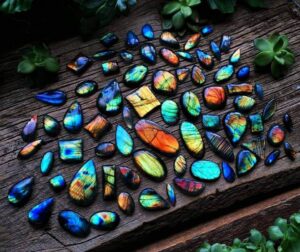
Gemstones have been treasured throughout history for their mesmerizing beauty and captivating allure. Among the many different types of gemstones, iridescent gemstones stand out for their unique play of colors, which seem to dance and shimmer as they catch the light. These enchanting stones exhibit a remarkable phenomenon called iridescence, where colors shift and change depending on the angle of observation and the angle of incident light. In this article, we will delve into the world of iridescent gemstones and explore six of the most stunning and sought-after varieties.
1. Opal: The Queen of Iridescence
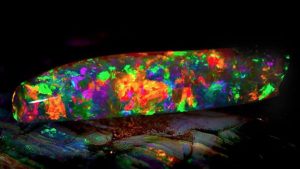
Opal, often referred to as the “Queen of Gemstones,” is renowned for its captivating play of colors. This mesmerizing gemstone exhibits a stunning array of hues, ranging from fiery reds and oranges to calming blues and greens. The iridescence of opal arises from its unique internal structure, which consists of tiny silica spheres that diffract light. As a result, opals seem to possess an otherworldly quality, as if they capture a piece of the universe within their depths.
Australian opals, particularly those from Lightning Ridge, are some of the most famous and highly prized opals in the world. Ethiopian opals are also gaining popularity for their vibrant play of colors. Opals are often used in jewelry to create eye-catching pieces that reflect the wearer’s personality and style.
2. Moonstone: A Celestial Elegance
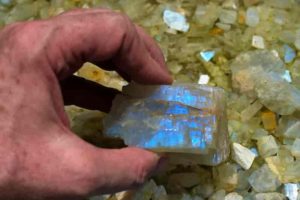
Moonstone, with its ethereal glow reminiscent of the moon’s soft radiance, is another exquisite iridescent gemstone. This feldspar mineral showcases a phenomenon known as adularescence, where light appears to move across the surface, creating a captivating play of blue or white hues. This effect is due to the presence of alternating layers of albite and orthoclase, which scatter light in a unique way.
Moonstone has a long history of significance in various cultures. It is often associated with femininity, intuition, and spirituality. The stone’s gentle shimmer makes it a popular choice for bohemian-inspired jewelry and designs that exude a sense of timeless elegance.
3. Labradorite: Nature’s Canvas of Color
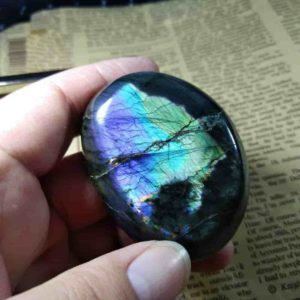
Labradorite, with its mesmerizing iridescent colors that resemble a painter’s palette, is a gemstone that truly captures the imagination. This feldspar mineral is known for its vibrant flashes of blue, green, gold, and sometimes even purple. The phenomenon, called labradorescence, occurs due to light interference caused by the presence of internal lamellar structures.
Hailing from the Labrador Peninsula in Canada, this gemstone has a unique charm that has made it a favorite among jewelry designers and collectors. Its captivating colors make it a versatile choice for creating statement pieces that effortlessly transition from day to night.
4. Peacock Ore (Bornite): Nature’s Metallic Symphony
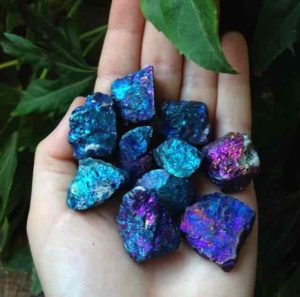
Peacock Ore, also known as Bornite, is a unique iridescent gemstone that displays a mesmerizing array of metallic colors. This mineral’s surface oxidizes to create a rainbow-like patina of iridescent shades, including deep purples, blues, and bronzes. It is often used as a specimen mineral due to its striking appearance.
Peacock Ore’s colors are reminiscent of the iridescent plumage of a peacock, giving rise to its name. While not as commonly used in jewelry as other gemstones, it is valued for its captivating appearance and is sometimes used in artisanal and unconventional pieces.
5. Pearl: Ocean’s Luminescent Treasure
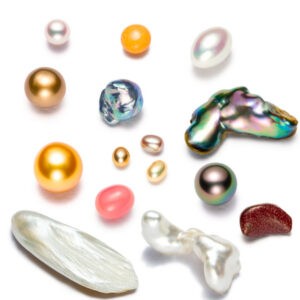
Pearls, often associated with elegance and purity, are unique among iridescent gemstones. Unlike other gemstones that derive their iridescence from internal structures, pearls achieve their shimmer through layers of nacre that form around an irritant within an oyster or mollusk. This process results in a captivating play of colors known as orient.
Cultured pearls, which are intentionally grown by pearl farmers, come in various shapes, sizes, and colors. Akoya pearls are prized for their classic white and cream tones, while Tahitian pearls boast a range of colors, including striking blacks and grays. Freshwater pearls, on the other hand, offer a more affordable option with a diverse array of colors.
6. Sunstone: A Glimpse of Sunlight
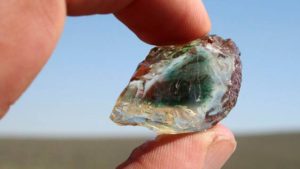
Sunstone, as its name suggests, is a gemstone that seems to capture the warmth and radiance of the sun. This feldspar mineral is known for its sparkling aventurescence, a phenomenon where light reflects off inclusions of minerals like hematite or goethite. The result is a play of colors that resembles the golden hues of a setting sun.
Oregon sunstone, in particular, is highly regarded for its captivating play of colors ranging from soft peach to intense red. Sunstone’s warm tones make it a popular choice for jewelry that adds a touch of warmth and vibrancy to any ensemble.
In conclusion
iridescent gemstones offer a mesmerizing and enchanting visual experience. From opals and moonstones to labradorite and pearls, these gems each possess a unique play of colors that captivates the beholder. Whether used in jewelry or admired as specimen pieces, these six types of iridescent gemstones remind us of the incredible beauty and diversity that nature has to offer.










